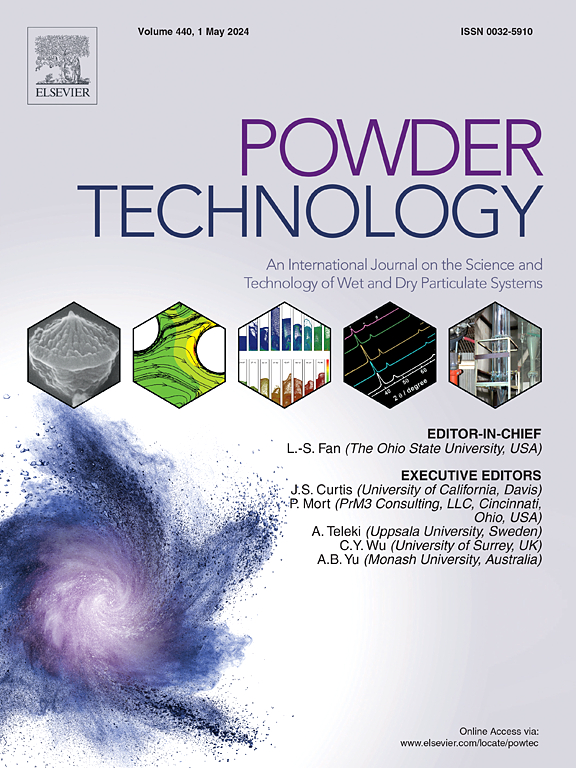Electrostatic response enhanced fiber filters: A long-term, low-resistance solution for particles removal in building ventilation systems
IF 4.5
2区 工程技术
Q2 ENGINEERING, CHEMICAL
引用次数: 0
Abstract
Fibrous filters are commonly employed in building ventilation systems to capture airborne particles and maintain acceptable indoor air quality. Introducing electrostatic forces into fibrous filters is an effective strategy that enhances filtration efficiency while maintaining low air resistance by synergistically combining electrostatic and mechanical filtration, especially for coarse filters. In this study, polydopamine (PDA) was utilized to modify a specially structured three-dimensional (3D) woven filter, resulting in reusable, washable functional fibers with enhanced electrostatic properties for sustainable air filtration applications. By integrating functional fiber filters with a carbon-brush ionizer, an Electrostatic Response Enhanced (ERE) system was developed to enhance electrostatic interactions, thereby achieving high-efficiency particulate removal with minimal airflow resistance. The ERE system demonstrated a remarkable enhancement in performance, achieving twice the filtration efficiency of the unmodified filter while maintaining a low pressure drop of just 32 Pa at an air velocity of 2.0 m/s. According to the air filter classification standards, the ERE was upgraded to a medium-efficiency filter, representing an improvement of three levels compared to the original 3D filter. Furthermore, the ERE system demonstrated consistent filtration efficiency following cleaning for dust removal, highlighting its strong potential for practical and sustainable use in ventilation and air purification systems.

静电响应增强纤维过滤器:一种长期,低阻力的解决方案,用于去除建筑物通风系统中的颗粒
纤维过滤器通常用于建筑物通风系统,以捕获空气中的颗粒并保持可接受的室内空气质量。在纤维过滤器中引入静电力是一种有效的策略,通过静电和机械过滤的协同结合,提高过滤效率,同时保持低空气阻力,特别是对于粗过滤器。在这项研究中,聚多巴胺(PDA)被用于修饰一种特殊结构的三维(3D)编织过滤器,从而产生可重复使用、可洗涤的功能纤维,具有增强的静电性能,可用于可持续的空气过滤应用。通过将功能性纤维过滤器与碳刷电离器集成,开发了静电响应增强(ERE)系统,以增强静电相互作用,从而以最小的气流阻力实现高效的颗粒去除。ERE系统表现出了显著的性能提升,其过滤效率是未经改进的过滤器的两倍,同时在风速为2.0 m/s时保持了仅32 Pa的低压降。根据空气过滤器分类标准,ERE升级为中等效率过滤器,与原来的3D过滤器相比,提高了三个级别。此外,ERE系统在清洁除尘后表现出一致的过滤效率,突出了其在通风和空气净化系统中实际和可持续使用的强大潜力。
本文章由计算机程序翻译,如有差异,请以英文原文为准。
求助全文
约1分钟内获得全文
求助全文
来源期刊

Powder Technology
工程技术-工程:化工
CiteScore
9.90
自引率
15.40%
发文量
1047
审稿时长
46 days
期刊介绍:
Powder Technology is an International Journal on the Science and Technology of Wet and Dry Particulate Systems. Powder Technology publishes papers on all aspects of the formation of particles and their characterisation and on the study of systems containing particulate solids. No limitation is imposed on the size of the particles, which may range from nanometre scale, as in pigments or aerosols, to that of mined or quarried materials. The following list of topics is not intended to be comprehensive, but rather to indicate typical subjects which fall within the scope of the journal's interests:
Formation and synthesis of particles by precipitation and other methods.
Modification of particles by agglomeration, coating, comminution and attrition.
Characterisation of the size, shape, surface area, pore structure and strength of particles and agglomerates (including the origins and effects of inter particle forces).
Packing, failure, flow and permeability of assemblies of particles.
Particle-particle interactions and suspension rheology.
Handling and processing operations such as slurry flow, fluidization, pneumatic conveying.
Interactions between particles and their environment, including delivery of particulate products to the body.
Applications of particle technology in production of pharmaceuticals, chemicals, foods, pigments, structural, and functional materials and in environmental and energy related matters.
For materials-oriented contributions we are looking for articles revealing the effect of particle/powder characteristics (size, morphology and composition, in that order) on material performance or functionality and, ideally, comparison to any industrial standard.
 求助内容:
求助内容: 应助结果提醒方式:
应助结果提醒方式:


